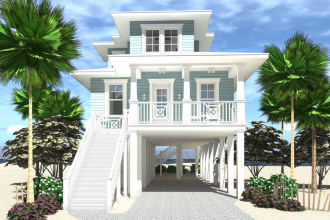Moss growth on a roof is a common concern for homeowners in Maryland. The region’s climate, with its humidity and frequent rainfall, creates an ideal environment for moss to develop. While it may appear harmless at first, it can trap moisture, causing potential issues over time. Recognizing the early signs and taking immediate action can help prevent damage.
Roofers in Maryland often encounter moss on properties with shaded or damp areas. Without proper care, this growth can impact the structure and longevity of a roof. Homeowners looking to maintain their properties should be aware of the warning signs and effective solutions. Roofers recommend routine maintenance to keep a home safe and its exterior in good condition.
Early Signs of Roof Moss Growth
Spotting moss in its early stages helps prevent it from spreading. Small green patches often appear on shingles, particularly in shaded areas where moisture lingers. As it continues to grow, the texture thickens, creating a noticeable fuzzy layer across the surface. This can lead to excess water retention, which weakens roofing materials over time.
A few indicators signal that moss is present and beginning to spread. Discoloration on shingles suggests trapped moisture, providing an ideal setting for moss to expand. Raised or curled edges on shingles may indicate that growth has formed underneath. If moss reaches gutters or downspouts, it can create blockages, affecting water drainage and increasing the risk of roof damage.
Effects of Moss on Maryland Roofs
Moss growth can hold moisture for long periods, creating an environment where roofing materials weaken. This retained dampness may encourage the gradual breakdown of shingles, reducing their durability. If left unaddressed, it could contribute to costly repairs, impacting the overall structure of the roof.
Homes with consistent moss buildup may experience issues beyond the surface. Water trapped beneath shingles has the potential to seep into underlying layers. In colder months, this retained moisture can freeze, which may put additional stress on the roofing material. Regular maintenance and inspections ensure that small concerns do not turn into major problems.
Safe Methods to Remove Moss
Taking the right approach to removing moss is essential to protecting the roof’s structure. Harsh scrubbing or high-pressure washing may cause damage, so gentle techniques should be used instead. A soft-bristled brush can loosen moss without disturbing the shingles. Spraying a roof-friendly cleaning solution can also help break down existing growth.
For more stubborn patches, applying a moss-killing treatment designed for roofs may be necessary. These solutions prevent regrowth and are safe for shingles when used correctly. After treatment, a light rinse with water can clear away debris. Regular inspections will help ensure that any new growth is addressed before it becomes a problem.
Preventive Measures for Maryland Homes
Maintaining a moss-free roof requires simple but effective steps. Maryland homeowners can take precautions to reduce the chances of regrowth. Increasing sunlight exposure by trimming overhanging branches can limit moisture retention. Keeping gutters clean allows proper water drainage, reducing excess dampness on the roof.
- Installing zinc or copper strips along the ridge of the roof releases elements that naturally prevent moss growth
- Scheduling annual roof inspections ensures that any early signs of moss are detected
- Addressing minor issues immediately can help avoid larger maintenance concerns
Reliable Roofing Services in Maryland
Maintaining a strong and moss-free roof in Maryland requires expertise. Homeowners seeking professional solutions can rely on experienced roofing specialists who provide thorough inspections, safe moss removal, and preventative treatments. With industry knowledge and proper tools, these experts ensure roofs stay in optimal condition, preventing long-term issues.
Expert roofers in Maryland stress the importance of identifying moss early and addressing it properly. A well-maintained roof not only protects a home but also helps preserve its long-term durability. Taking preventive measures and scheduling inspections keep properties safe from unnecessary roofing concerns.













